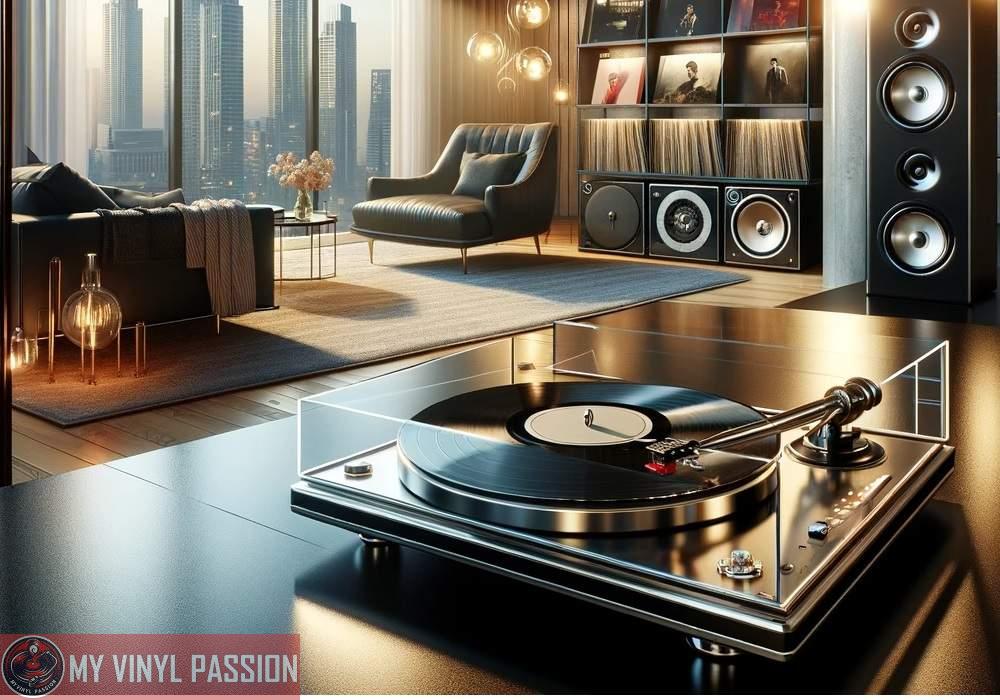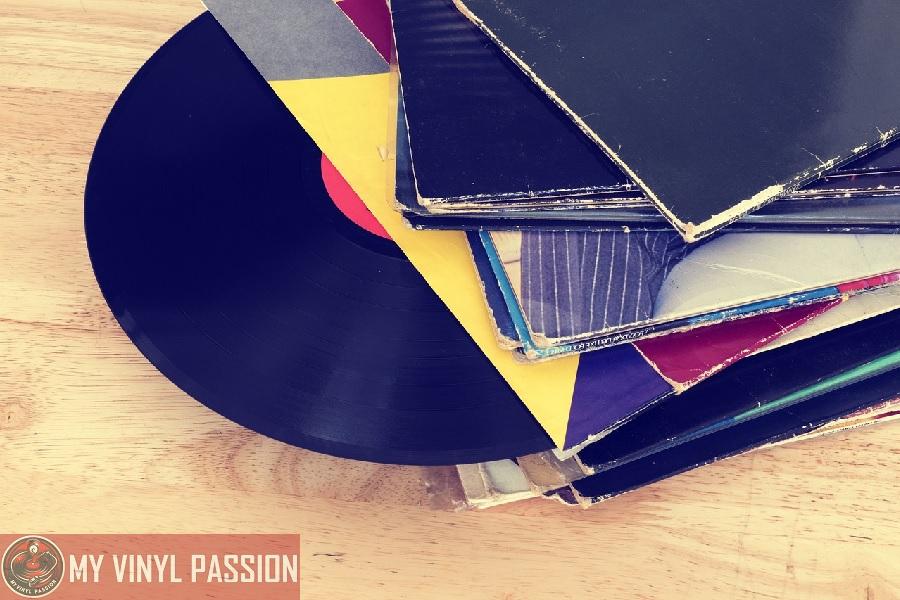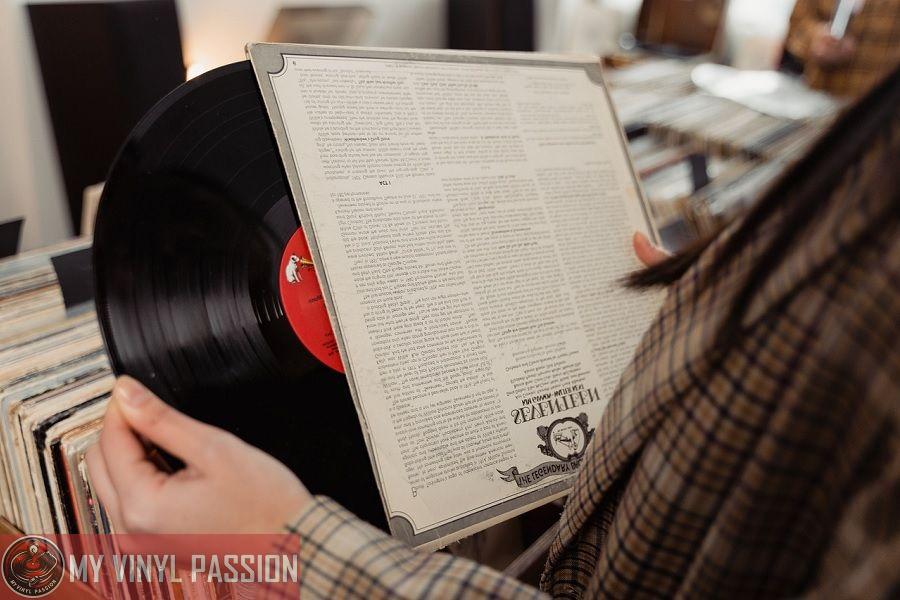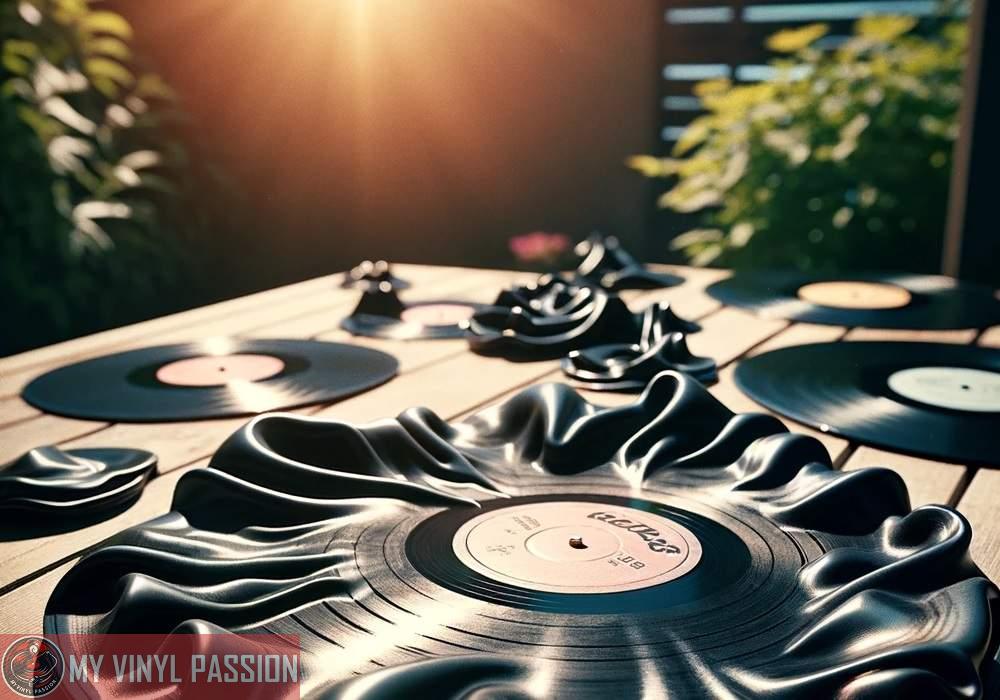In recent years, the resurgence of vinyl records has led many music enthusiasts to question whether modern vinyl records can truly offer a superior listening experience compared to digital formats.
This topic has sparked countless debates among audiophiles, with some championing the warmth and authenticity of vinyl while others argue that digital technology provides the ultimate sound quality.
The quality of sound on a vinyl record depends on a variety of factors, including the production process, the equipment used for playback, and individual preferences for audio fidelity.
In Summary
Modern vinyl records and digital formats each provide unique listening experiences based on their production process and playback equipment
The quality of sound on a vinyl record is influenced by various factors, including personal audio preferences
Evaluating the superiority of vinyl or digital depends on individual priorities, such as audio fidelity, equipment investment, and the overall listening experience.
Furthermore, vinyl and digital formats each have their own unique characteristics that contribute to the overall listening experience—one format may not necessarily be better than the other, but rather, they offer different aspects that appeal to distinct tastes.
The Evolution of Audio Formats
From Vinyl to Digital
In the early days of recorded music, vinyl records were the primary format for enjoying your favorite tunes. But as technology advanced, other formats like cassette tapes, CDs, and eventually MP3s and streaming services emerged, each claiming to offer better sound quality and convenience than their predecessors.
With the rise of digital music, you could store thousands of songs on a single device and easily acquire new music through online platforms. However, audio quality was often sacrificed for the sake of convenience and portability.
CDs offered better sound quality than cassettes, but many argue that they still fall short when compared to the warmth and depth of analog vinyl records.
| Audio Format | Year Introduced | Notable Advantages | Notable Disadvantages |
|---|---|---|---|
| Vinyl | Late 1800s | Warm, rich sound | Bulky, vulnerable to damage |
| Cassette Tapes | 1960s | Portable, affordable | Susceptible to wear, lower sound quality |
| CDs | 1982 | Better sound quality than tapes; durable | No longer considered portable |
| MP3s | 1990s | Highly portable, easily shared | Possible loss of sound quality due to compression |
| Streaming | Early 2000s | Access to vast music libraries, convenience | Requires internet connection, potential for lower audio quality |
Revival of Vinyl Records
Despite the widespread adoption of digital formats, vinyl records have experienced a resurgence in popularity in recent years. Collectors and audiophiles alike appreciate the physicality of holding a record and the sense of nostalgia it evokes.
There are several reasons behind this resurgence of vinyl:
- Sound Quality: Many feel that the sound quality of vinyl records is superior to digital formats. The analog nature of vinyl helps to capture the nuances and warmth of music, which can often be lost in digital compression.
- Tangible Experience: Owning and playing a vinyl record is a tactile, ritualistic experience. From setting up the turntable to flipping the record over, there is a sense of involvement and connection with the music that digital formats cannot replicate.
- Album Artwork: Vinyl records often come with large, attention-grabbing cover art and informative liner notes, enhancing the overall experience of music appreciation.
- Nostalgia: Owning and playing vinyl records can evoke a sense of nostalgia for an era when obtaining and listening to music was a more engaging and personal experience.
So, while digital formats offer convenience and portability, modern vinyl records remain popular for their superior sound quality and the unique experience they provide. As you explore your music listening options, consider how each format may impact your enjoyment of your favorite tunes.
Science Behind the Sound
Vinyl vs Digital Audio
While discussing vinyl and digital audio, it’s essential to understand their basic principles. In vinyl records, sound is stored as grooves in the vinyl disc, with the shape of the grooves representing the audio waveform.
When a stylus traces the grooves, it translates the waveform into electrical signals, which are then amplified and turned into sound.
On the other hand, digital audio represents sound as a series of numerical samples. The audio waveform is sampled at regular intervals, and each sample is assigned a numerical value.
This digital representation of sound is stored as binary data and is decoded back into an analog waveform when played. Common digital audio formats include CDs, MP3s, and streaming services.
- Audio Quality: The debate over audio quality often revolves around the topic of analog warmth that vinyl records are said to offer. This warmth stems from the continuous nature of the analog signal, which is perceived as a more accurate representation of the original sound. Digital audio has come a long way, but some still argue that its discrete samples cannot fully capture the continuous nature of sound. However, others claim that modern digital technology offers audio quality that surpasses vinyl’s capabilities.
- Frequencies: Vinyl records have limitations in their frequency range, particularly in the low frequencies, compared to digital audio. The grooves in a vinyl record can struggle to accurately represent frequencies below 50 Hz, often resulting in a warmer, less detailed bass. In comparison, digital audio can typically handle a wider frequency range from 20 Hz to 20,000 Hz (CD-quality), capturing both high and low frequencies with more precision.
- Distortion: Vinyl records can produce a higher level of distortion compared to digital audio due to the physical limitations of the medium. This distortion is generally more prominent in the inner grooves of the record and results in a slight loss of clarity, particularly in the high frequencies. Digital audio generally has lower distortion levels, providing a clearer listening experience.
- Compression: One important factor to consider in sound quality is audio compression. Digital audio formats often employ lossy compression, which reduces file size by discarding inaudible or less important data. This has led some to believe that vinyl records offer a more complete and uncompressed audio experience. However, not all digital audio uses lossy compression, and high-resolution audio formats can provide a listening experience comparable to or even better than vinyl.
High and Low Frequencies
As mentioned earlier, vinyl records have some limitations regarding high and low frequencies. In addition to the less precise reproduction of low frequencies, high frequencies can also be affected by the physical medium.
- High Frequencies: Vinyl records are susceptible to wear and damage over time, particularly in the high-frequency regions of the audio spectrum. Constant playback can deteriorate the grooves, leading to a loss of clarity in the treble. On the other hand, digital audio files are not subject to wear and tear, offering a consistent listening experience regardless of the number of plays.
- Low Frequencies: As discussed, low frequencies on vinyl records can be less detailed and more distorted than their digital counterparts. This results in a warmer sound, which some listeners prefer, but may compromise the overall accuracy of the audio reproduction. Digital audio files, with their broader frequency range, provide a more accurate and consistent listening experience across the spectrum.
In summary, while vinyl records offer a unique and warm listening experience, they are subject to certain limitations compared to digital audio. The choice between the two formats ultimately depends on your personal preferences and priorities in terms of sound quality and authenticity.
Tangible Charm of Vinyl Records
Mastering and Material
The vinyl material plays a significant role in making modern vinyl records more appealing. Vinyl records are crafted from polyvinyl chloride (PVC), providing a warmer and more natural sound than digital recordings.
Additionally, the mastering process for vinyl is different from that of digital formats. A vinyl master is carefully created by cutting grooves in the PVC to capture the original analog signal, preserving the nuances of the music.
During the manufacturing process, vinyl records may exhibit unique imperfections that add character to each record. These qualities are often seen as appealing assets rather than drawbacks, enhancing the overall listening experience.
Playback Experience
The playback equipment used for vinyl also contributes to its renowned charm. Record players, also known as turntables, serve as a visual and tactile interface for engaging with your music collection. Operating a turntable requires precise interactions, such as:
- Placing the needle on the record’s surface
- Adjusting the speed setting
- Lowering and raising the tonearm
These steps foster a personal connection with the music, as you actively handle the record and experience its physicality.
| Equipment | Purpose |
|---|---|
| Turntable | Provides a platform for spinning the vinyl record |
| Tonearm | Guides the needle to track the grooves |
| Needle | Reads the grooves and transmits the audio signal |
Furthermore, the act of collecting vinyl records fosters a unique sense of ownership. Your physical collection represents an investment of both time and resources, making it a tangible reflection of your taste in music.
In summary, the tangible charm of vinyl records stems from their distinctive mastering process, materials, and playback experience. Embracing the warm sound, unique qualities, and engaging equipment interactions can make listening to vinyl records a very rewarding experience.
Technical Specifications
Dynamic Range
The dynamic range of a vinyl record refers to the difference between the quietest and loudest sounds that can be reproduced by the medium. Vinyl records typically have a wider dynamic range compared to digital formats, such as CDs or streaming services.
This means that with vinyl, you can experience a broader spectrum of sound levels, from subtle details in quiet passages to powerful crescendos in louder parts.
However, the dynamic range of a vinyl record is limited by factors like groove spacing and stylus size. Records with higher levels of dynamic range will often display a reduced risk of distortion but could result in unwanted background noise.
Sample Rate
Sample rate is a term associated with digital audio formats like CDs and MP3 files. It is the frequency at which an audio signal is converted from an analog waveform into a digital representation.
CDs have a sample rate of 44.1 kHz, which means that the original sound is sampled 44,100 times per second. Higher sample rates, such as 96 kHz or 192 kHz, generally provide better audio quality and are often used for lossless formats.
Vinyl records do not have a digital sampling process; they are inherently analog, making them highly dependent on the accuracy of the playback system, including the stylus, cartridge, and turntable for sound reproduction.
While sample rate limitations do not apply to vinyl, it is still crucial to have a high-quality playback system to maintain the integrity of the original recording and minimize distortion and noise.
Remember, each medium has its own set of technical specifications, and the sound quality will depend on various factors. Ultimately, the listening experience is highly personal and subjective, so it’s essential to choose the format that best suits your preferences and setup.
Equipment and Setup
Turntables and Cartridges
When it comes to modern vinyl records, the quality of your equipment plays a significant role in the listening experience. To get the best sound, start with a good-quality turntable. There are plenty of budget turntables available, but investing in a higher-quality model will greatly enhance your enjoyment of vinyl records.
The cartridge is another essential component of your setup. This is the small device that houses the needle (stylus) and connects to the tonearm. Different cartridges produce unique sound characteristics, so it’s important to choose one that aligns with your personal preferences.
Here are a few factors to consider when selecting a turntable and cartridge:
- Budget: Set a budget that suits your needs, but remember that you often get what you pay for in terms of quality.
- Compatibility: Make sure the cartridge is compatible with your turntable model.
- Upgradeability: Look for turntables with built-in upgrade options, such as adjustable counterweights and replaceable cartridges.
Phono Stages
The phono stage (or phono preamp) is a crucial part of your vinyl setup. This component amplifies the signal from your record player before it reaches your speakers or amplifier. A good-quality phono stage can make a significant difference in the clarity and detail of your sound.
There are two main types of phono stages:
- External: Connects to your turntable and amplifier separately. Offers more flexibility and typically provides better sound quality.
- Built-in: Integrated into your turntable or amplifier. Convenient but may be limiting in terms of sound quality.
When choosing a phono stage, consider the following:
- Compatibility: Check that your turntable and amplifier can work with the phono stage you choose, whether it’s built-in or external.
- Budget: Determine how much you’re willing to spend – higher-quality phono stages can be expensive, but the sound improvement may be worth it.
- Features: Look for phono stages with helpful features like adjustable gain, which allows you to fine-tune the volume levels of your records.
To make the most of your modern vinyl records, take the time to carefully select your equipment and set it up correctly. With the right turntable, cartridge, and phono stage, you’ll enjoy a superior listening experience that truly showcases the beauty of vinyl.
Cost Analysis
Vinyl vs Digital Cost
When considering the cost of building a music collection, vinyl records tend to be more expensive than their digital counterparts. A new vinyl record can cost anywhere from $15 to $40, whereas digital albums on platforms like iTunes or Amazon often range from $5 to $15.
Additionally, streaming services like Spotify, Apple Music, and Tidal offer vast music libraries for a monthly fee of around $10, eliminating the need to purchase individual albums.
Vinyl enthusiasts often argue that the higher cost is justified by the superior sound quality and the tangible, collectible nature of vinyl records. Some also appreciate the used vinyl market, which can offer more affordable options and a sense of discovery.
Cost of Equipment
Vinyl Setup:
To play vinyl records, you will need a turntable, amplifier, speakers, and possibly a preamp if your amplifier does not have a phono input. A basic setup could cost around $300, while a more advanced setup can easily reach $1,000 or more. Here’s a breakdown of the potential costs:
- Turntable: $100 – $500+
- Amplifier: $100 – $300+
- Speakers: $100 – $500+
- Preamp (if needed): $50 – $200
Digital Setup:
For a digital music setup, you will need a playback device (smartphone, tablet, computer, or dedicated music player) and speakers or headphones. Many people already have a suitable device, reducing the overall cost. A decent pair of speakers or headphones can be purchased for under $100, while higher-end models can cost several hundred dollars.
- Playback Device: $0 – $1000+ (if purchasing a dedicated device)
- Speakers or Headphones: $20 – $500
In summary, a vinyl setup typically has a higher initial cost compared to a digital one. Your personal preferences and budget will ultimately determine the best choice for you.
Keep in mind that both vinyl and digital music have their unique advantages, and many music fans enjoy a combination of both formats.
The Listening Experience
Physical Interaction
As a music lover, one of the most significant aspects of the vinyl record experience is the physical interaction you have with the medium. Unlike digital music, which is often a passive listening experience, vinyl records require you to actively engage in the process.
You need to place the record on the turntable, carefully position the needle, and occasionally flip the record to continue listening. This hands-on involvement can make you feel more connected to the music and can enhance your appreciation for the artistry involved.
Sound Depth and Warmth
The analog format of vinyl records is often praised for the depth and warmth it brings to the listening experience.
Unlike the lossy compression used in digital music formats, which can remove subtle nuances in the music, vinyl provides a more authentic representation of the audio as recorded in the studio. The grooves etched into the record contain a continuous waveform that translates directly into sound, resulting in rich, full audio quality.
Vinyl aficionados often appreciate the depth of vinyl recordings, as they tend to provide a fuller, more immersive sound than digital formats. This depth allows you to better appreciate the individual layers and elements within the recording, making for a more engaging listening experience.
Moreover, warmth is another aspect that attracts many music lovers to vinyl. The inherent qualities of analog recordings – especially elements such as slight pops, crackle, and hiss – can add a sense of warmth and nostalgia.
These sonic imperfections create a unique and charming listening experience that cannot be replicated by digital formats.
To illustrate the differences in sound quality between vinyl and digital formats, consider the following comparison table:
| Format | Sound Depth | Warmth | Subtle Nuances | Physical Interaction |
|---|---|---|---|---|
| Vinyl | High | High | Preserved | Requires active engagement |
| Digital | Lower | Less | Can be lost in compression | Passive listening experience |
In conclusion, while modern vinyl records may not always sound inherently better than digital formats, the overall experience they provide – including the depth, warmth, and physical interaction – can be more appealing to passionate music lovers.
Frequently Asked Questions
Do modern vinyl records have better sound quality than older ones?
Yes, modern vinyl records usually have better sound quality than older ones. This is because of the advancements in manufacturing technology and recording techniques. However, the sound quality of a vinyl record also depends on its condition, so a well-maintained older record can still sound great.
How do vinyl records compare to CDs in sound quality?
Vinyl records are known for their warm, analog sound, while CDs offer clearer, digital sound. Some listeners prefer the unique characteristics of vinyl, while others may appreciate the accuracy and clarity of CDs. In the end, it comes down to personal preference and the quality of the pressing and recording on each format.
Does vinyl provide a better audio experience than Spotify?
Vinyl and Spotify provide different audio experiences. Vinyl offers an analog sound and the tactile experience of physically handling the record and artwork. Spotify provides the convenience of streaming and access to a vast library of music. Sound quality on Spotify depends on your internet connection, while vinyl playback relies on your turntable setup and record condition.
What makes vinyl records sound different from digital formats?
Vinyl records are created using an analog process, which means that sound is physically etched into the grooves of the record. This creates a warm, organic sound quality. Digital formats, like CDs and streaming services, use digital files that represent audio data as binary code, resulting in a more accurate and pristine sound replication.
Are modern album recordings on vinyl as good as older ones?
Modern album recordings on vinyl can be as good as or better than older ones, thanks to improved pressing techniques, mastering processes, and recording technology. However, some audiophiles may argue that the analog equipment used in older recordings has a unique warmth and character that’s difficult to replicate with modern digital equipment.
Is investing in modern vinyl records worth it for sound quality?
Investing in modern vinyl records can be worth it for sound quality if you appreciate the warm, analog sound and the tactile experience of vinyl. However, sound quality depends on your turntable setup, speaker system, and the condition of your records. If you’re not interested in building a vinyl collection and curating a high-quality playback system, digital formats may be more convenient and cost-effective for you.





